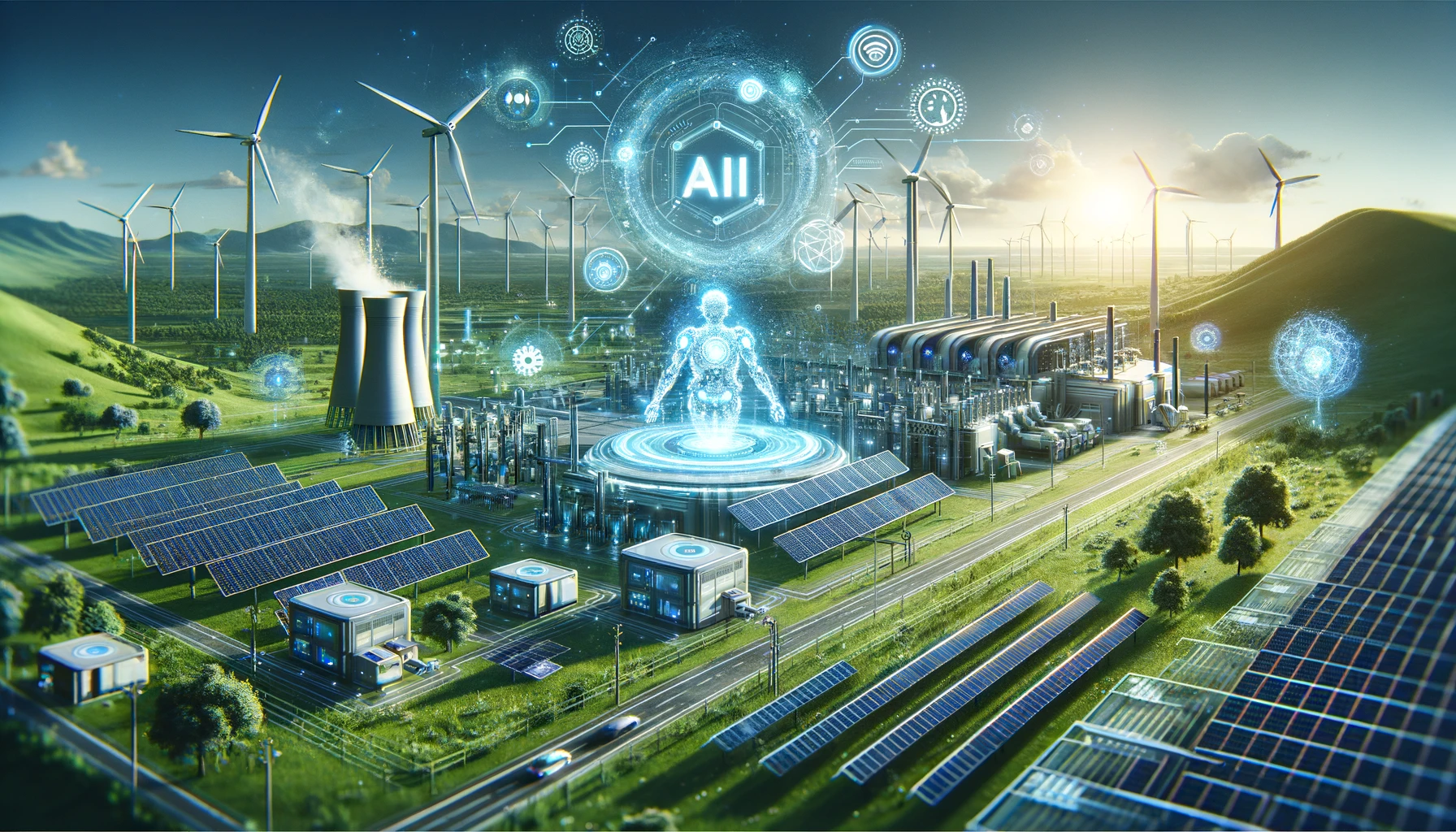The need for sustainable energy solutions is urgent. As we stare down the barrel of a rapidly changing climate, it’s clear that our current methods of generating and consuming energy are unsustainable. The good news is that AI is already playing a crucial role in optimizing renewable energy sources, such as solar and wind power.

Sustainable energy solutions refer to the generation and consumption of energy from renewable resources like sunlight, wind, water, and geothermal heat. These sources are abundant, clean, and have a minimal impact on the environment compared to traditional fossil fuels such as coal, oil, and natural gas. As we move towards a more sustainable future, AI is at the forefront of driving this transformation.
AI’s existing role in sustainable energy is impressive. By leveraging predictive analytics, condition monitoring, and edge computing, AI is helping to streamline energy distribution, consumption, and storage. For instance, AI-driven smart grids are optimizing the flow of energy across networks, while distributed energy management systems are empowering households to generate their own clean energy.
One real-world example of this can be seen in the work done by Google’s DeepMind AI system. In 2016, DeepMind was able to reduce the amount of energy used for cooling data centers by up to 40% through predictive analytics and machine learning algorithms (Source).
But AI’s impact on sustainable energy doesn’t stop there. As we move forward, AI will play an increasingly crucial role in predicting and optimizing energy production and consumption based on weather forecasts, demand patterns, and energy supply predictions. Edge AI will enable real-time decision-making at the edge, while Explainable AI (XAI) will enhance trust in AI-driven energy decisions by providing transparency and interpretability.
For example, researchers from MIT have developed an AI system that can predict wind power output 36 hours in advance with 70% accuracy (Source). This level of prediction allows energy providers to better manage their resources and reduce waste.
The future of AI-powered sustainable energy solutions is bright. By revolutionizing energy storage systems through predictive maintenance and optimization, AI can help households and industries alike to reduce their carbon footprint. Additionally, AI-optimized smart buildings will become the norm, reducing energy consumption while increasing efficiency. And let’s not forget about electric vehicles – AI-powered charging infrastructure will optimize charging times, reducing range anxiety and promoting widespread adoption.
One such example is Tesla’s Autobidder system, which uses machine learning algorithms to predict electricity demand and supply in real-time (Source). This allows the company to sell excess solar power back into the grid at optimal times, maximizing revenue while minimizing waste.
While AI is poised to play a transformative role in sustainable energy, there are challenges ahead. We’ll need to overcome data quality and availability issues, scalability and deployment complexity, and ensure equitable access to sustainable energy solutions globally. Additionally, potential risks associated with over-reliance on AI in sustainable energy solutions (e.g., loss of control or accountability) must be addressed through robust governance frameworks that balance innovation with safety and security concerns.
As we look to the future, we can expect AI-DRIVEN sustainable energy solutions to converge with emerging technologies like quantum computing and blockchain. Governments and industries will invest in AI research and development, driving innovation and accelerating the adoption of sustainable energy solutions. The stage is set for a revolution in sustainable energy – and AI is at the forefront.
As usual, stay tuned to this blog for more insights on the intersection of AI, sustainability, and energy efficiency!
Takeaways
- AI’s existing role in sustainable energy includes optimizing renewable sources like solar and wind power through predictive analytics, condition monitoring, and edge computing.
- By leveraging AI-driven smart grids and distributed energy management systems, households can generate their own clean energy.
- Google’s DeepMind AI system reduced the amount of energy used for cooling data centers by up to 40% through predictive analytics and machine learning algorithms in 2016.
- Researchers from MIT have developed an AI system that can predict wind power output 36 hours in advance with 70% accuracy, allowing better management of resources and reduced waste.
- AI-powered sustainable energy solutions will revolutionize energy storage systems through predictive maintenance and optimization, promoting widespread adoption of electric vehicles.
- Tesla’s Autobidder system uses machine learning algorithms to sell excess solar power back into the grid at optimal times, maximizing revenue while minimizing waste.
- Challenges ahead include data quality and availability issues, scalability and deployment complexity, and ensuring equitable access to sustainable energy solutions globally.